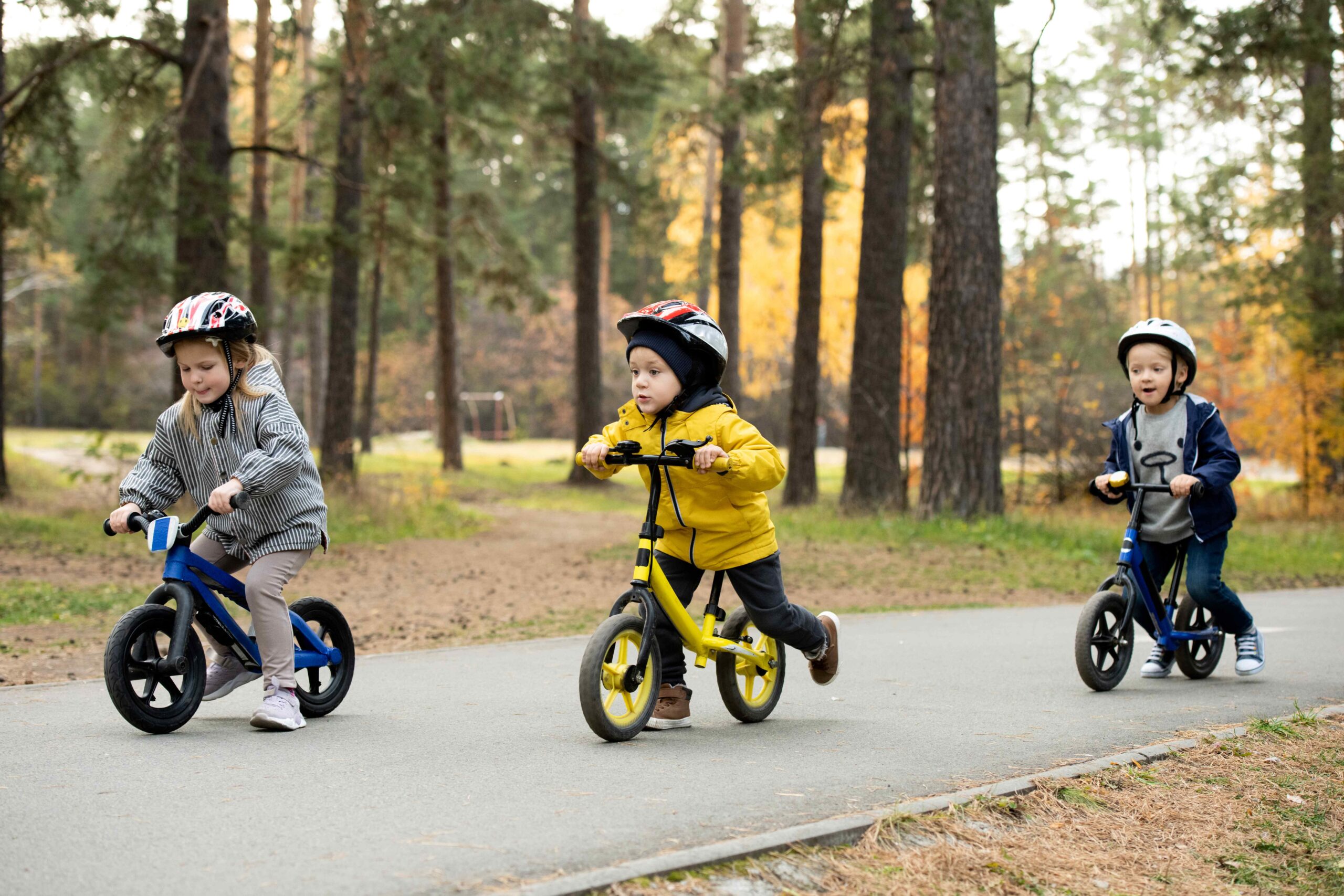When teaching a child to ride, the first step is often the hardest — but also the most important. The early experiences your child has on a bike will shape their confidence, balance, and overall enjoyment of cycling for years to come. Two popular approaches dominate the conversation: balance bikes and training wheels. But which one sets your child up for success?
Let’s break down the differences, benefits, and what to consider when choosing the best path for your young cyclist.
What Are Training Wheels?
Training wheels are small side wheels attached to a standard pedal bike to provide extra stability. They’re commonly used to teach pedaling first, with balance introduced later.
Benefits of Training Wheels:
- Familiar setup for parents who learned this way
- Teaches pedaling mechanics early
- Provides a sense of immediate “riding” success
- Can be used on existing kid bikes
However, training wheels don’t help develop balance, often resulting in a longer learning curve once they’re removed.
What Is a Balance Bike?
A balance bike is a small, pedal-free bicycle designed to help children learn how to balance before learning to pedal. Children push themselves forward using their feet, gradually learning to glide while maintaining control and stability.
Benefits of Balance Bikes:
- Develops core balance and coordination
- Encourages active participation in motion
- Easy to maneuver and less intimidating for young riders
- Promotes a smooth transition to pedal bikes without the need for training wheels
Balance bikes often lead to quicker mastery of cycling because kids learn to rely on their own sense of balance rather than external supports.
Balance Bikes vs. Training Wheels
When choosing a first bike for your child, it’s important to understand how balance bikes and bikes with training wheels support early riding development. Both options aim to build confidence, but they do so in different ways. Knowing the distinctions can help you pick the best fit for your child’s age, coordination level, and personality.
Key differences include:
- Balance development
- Pedaling skills
- Terrain flexibility
- Weight and maneuverability
- Transition to pedal bikes
Each option offers its own set of advantages depending on your child’s needs and how quickly you want them to progress toward independent riding. Some kids may thrive on the simplicity of a balanced bike, while others benefit from the extra stability training wheels provide at first.
Transitioning to a Pedal Bike
No matter which starting method you choose, the goal is the same — a smooth, confident transition to a standard two-wheel pedal bike. Balance bike users typically don’t need training wheels at all. Kids who start with training wheels might need more time to adjust once they’re removed, as they must then develop balance from scratch.
Choose What Fits Your Child Best
Every child learns differently, and there’s no one-size-fits-all answer. What matters most is creating a positive and pressure-free environment where your child can explore, try, and grow. Whether it’s the gliding start of a balance bike or the early pedaling of training wheels, the right choice is the one that helps your child feel empowered on two wheels.
